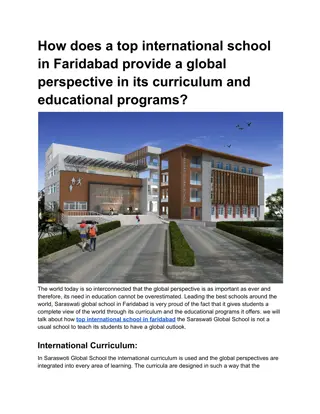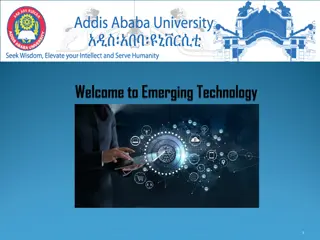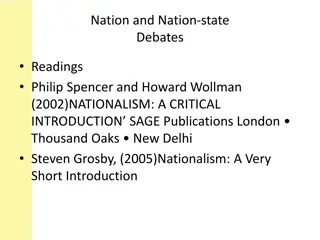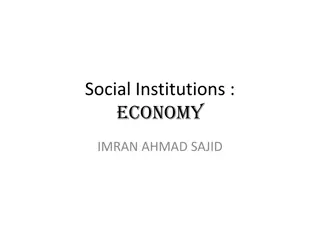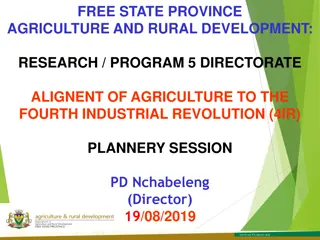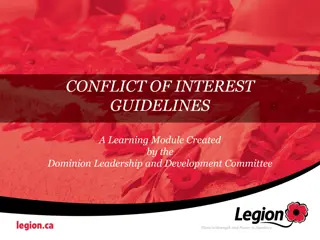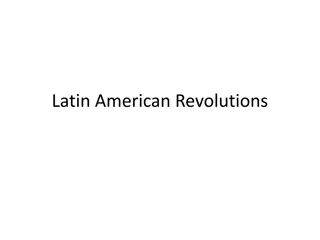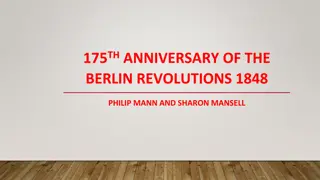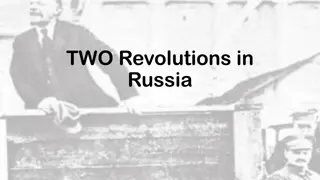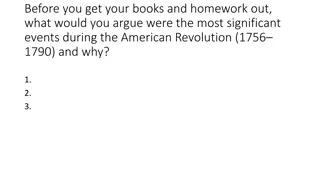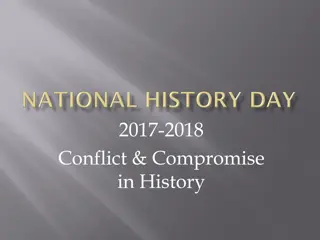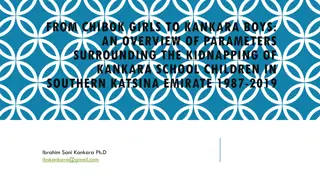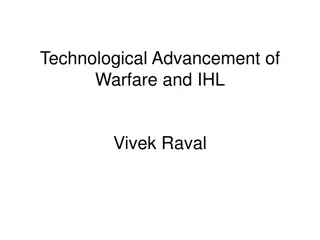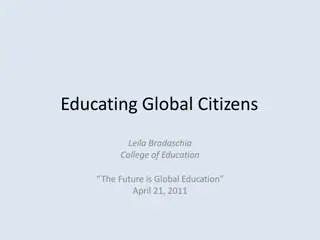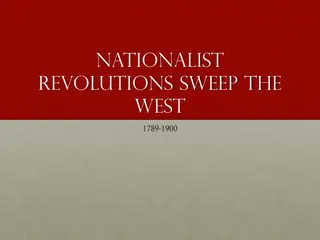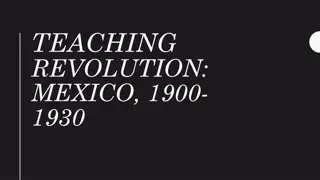Global Conflicts and Revolutions: A Historical Perspective
The turbulent events of the 20th and 21st centuries, from the aftermath of WWI with the Treaty of Versailles to the devastating Rwandan Genocide in 1994, have shaped our world through wars, genocides, and ideological clashes. The rise of leaders like Hitler, the tragedy of Pearl Harbor, the Korean War's ideological battle, and the Rwandan Genocide's horrors all illustrate how global changes and realignments have influenced economies, politics, and societies, impacting millions of lives worldwide.
Download Presentation

Please find below an Image/Link to download the presentation.
The content on the website is provided AS IS for your information and personal use only. It may not be sold, licensed, or shared on other websites without obtaining consent from the author.If you encounter any issues during the download, it is possible that the publisher has removed the file from their server.
You are allowed to download the files provided on this website for personal or commercial use, subject to the condition that they are used lawfully. All files are the property of their respective owners.
The content on the website is provided AS IS for your information and personal use only. It may not be sold, licensed, or shared on other websites without obtaining consent from the author.
E N D
Presentation Transcript
Group 6 The Dream Team: 1900-Present Accelerating Global Changes and Realignments Sara Lynch, Jen McCaffrey, Brian Russo, Ethan Thompson
WWI ended with the Treaty of Versailles. The treaty of Versailles did not solve all of the problems of the war. The biggest problem with the Treaty of Versailles was that Germany was forced to pay for all the damage of the war. This led to economic issues in Germany. This is part of what made Hitler powerful. He gave people hope of a better economy in their country. This relates to AP World theme 4, creation expansion and interaction of economies. Germany's economy affected all of Europe and wound up being one of the causes of WWII. WWI and the Treaty of Versailles
When the Japanese foolishly bombed the US Pearl Harbor, that ultimately doomed the axis powers as we know. The attack on Pearl Harbor occurred on December 7th, 1941. The Japanese surprise attack destroyed about 20 US naval vessels, 8 battleships, over 300 airplanes and killed over 2,000 Americans and wounded about another thousand. The very next day, President Roosevelt and the US declared war on Japan and entered the second World War. The US, along with the Allies (Great Britain and the Soviet Union), took down the Axis powers effectively ending the Second World War. Pearl Harbor: The US Entry into WW II AP World Theme #3 is present during Pearl Harbor because politics and forms of governance are involved. Pearl Harbor was the reasoning behind the United States' entry into World War 2.
The Korean War was the conflict between North and South Korea. On the larger scale, it was a fight between communism and democracy. At first, the Korean War was one that was increasingly defensive. The mission was to get all of the communists out of South Korea. This mission came with consequence, disease and dehydration was present in this fight, and killed many. American's were often afraid and fled battles. Korean War The Korean war relates to AP World theme #2. This theme relates to belief systems and ideologies because of the idea of communism and democracy. The Korean War focused on aggression because of certain systems and the way they were portrayed.
The Rwandan Genocide occurred in April of 1994 between the Hutus and the Tutsis. The mass killings of the Tutsi population was ignited by the death of President Habyarimana, a Hutu. Upwards of one million Rwandans were murdered during this 100 day span. Rwandan Genocide AP World theme #3 is evident here, "State-building and forms of government", Empires, and Revolts and revolutions, because the entire Rwandan Genocide is a revolt that affected the entire nation of Rwanda, and also Africa as a whole. This recent genocide shows how the world is still not taking preventative measures for things like Genocide after World War 2.
The 9/11 attack is an event still fresh in many minds. These attacks were presented as spontaneous, but were almost expected. With the Treaty of Versailles being enforced, many countries began to fall apart and split. This also divided the force of government power, which became a problem for citizens. Specific citizens decided to take matters into their own hands, this is when extremists took action. These members of an extremist group called al-Qaeda decided to break free, showcase their power, and demonstrate their hate. Their motives were somewhat scattered, but all revolved around religion. On that day, a precedent was set for future safety as well as preventative actions that needed to be taken in order to protect Americans. 9/11 Attacks This event relates to AP World Theme #3 because it directly compares to revolts and revolutions, and forms of governance. The revolts are an effect from the destruction and isolation of government. This theme summarizes the falling of the Ottoman Empire all the way to the 9/11 attacks.
This time period begins with WWI and goes to the present. All of these events can be considered effects of WWI. Many of the issues from WWI were not solved in the Treaty of Versailles. Germany was forced to pay repressions from WWI and was economically unstable because of this. When the US entered WWII after Pearl Harbor, it changed the outcome of the war. The Korean War was an example of the split in the world between communism and capitalism that resulted from WWII. The Rwanda genocide was an effect of the European imperialism that ended after WWI. After the European countries left Africa, the governments there became very weak. This created power struggles in the new nations. Often the groups that came to power were irrational and did things like start genocides. The attacks on 9/11 happened for a similar reason. After WWI, the Ottoman empire was broken up which created new, weak nations. The weak governments in these nations gave rise to terrorist groups that tried to take control of the countries. Overall connection




